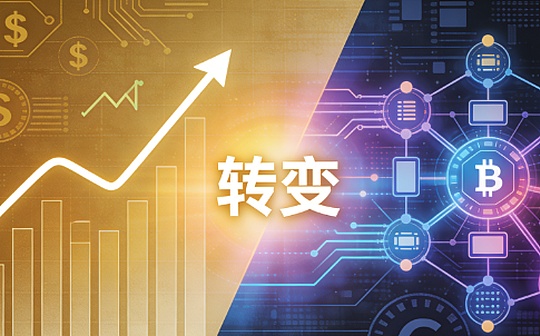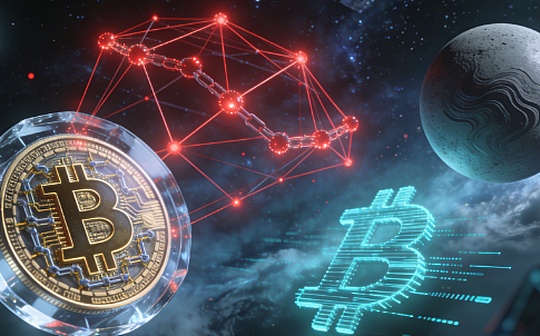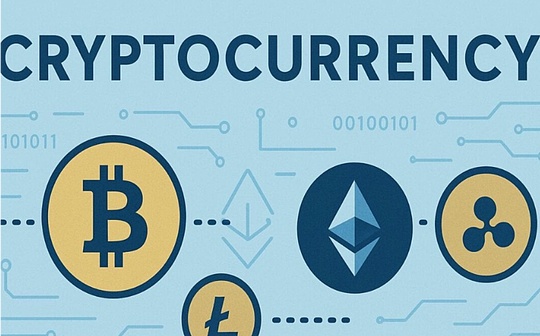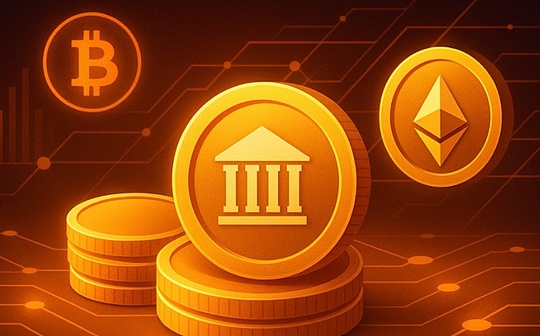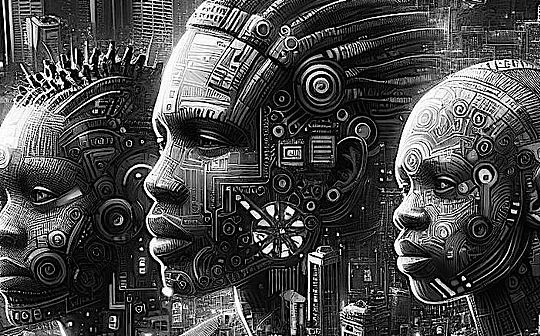
introduction
Technological progress is the core driving force of economic growth.From steam engines to electricity, to the Internet, General Purpose Technologies (GPTs) have profoundly changed the prosperity model of society by reshaping the industrial structure, labor market and economic trajectory.The commercialization of electricity in 1882 marked the global economy entering a parabolic growth stage, catalyzing the revolution in manufacturing, transportation and communications.Today, artificial intelligence (AI) is reshaping the 21st century economy through automation, data processing and intelligent decision-making, as a universal technology with equal potential for change.This article combines the experience of historical general technologies and modern data predictions to deeply analyze the impact of AI on economic growth, employment market, global development and financial markets, explores its opportunities and challenges, and proposes policy recommendations to ensure inclusive prosperity.
Historical technological change and economic growth
The First Industrial Revolution: Steam Engine and Mechanization
The first industrial revolution from the 18th to the early 19th century marked a fundamental change in economic growth patterns.The introduction of steam engines has shifted production from manual labor to mechanization, significantly improving the production capacity of industries such as textiles, steel and transportation.According to economic historian Angus Maddison, the average annual growth rate of per capita GDP in the UK increased from 0.2% to 0.5% between 1760 and 1830, reflecting the driving force on productivity by steam engines.Steam engines reduce production costs, give birth to factory systems and railway networks, create new jobs, and lay the foundation for subsequent technologies such as electricity.However, mechanization also replaced traditional handicraftsmen, leading to short-term social unrest, such as the Luddies movement in the UK (1811–1816), where workers sabotage machines due to unemployment protests.
The Second Industrial Revolution: The Catalytic Effect of Electric Power
In 1882, the operation of the first commercial power station (Holborn Viaduct in London and Pearl Street in New York) marked the commercialization of electricity and triggered the Second Industrial Revolution.Electricity, as a general technology, has spawned innovations such as motors, telecommunications and lighting, and has completely changed the production and lifestyle.According to historical data from the World Bank and Maddison, the annual average growth rate of global per capita GDP jumped from 0.5% to 1.3% between 1870 and 1913, and electrification drove this acceleration.
The adoption of electricity follows an S-shaped curve: it was slow in the early 1890s, spread rapidly in the 1910–1920s, and reached saturation in the 1930s.Its economic impact is estimated to contribute 0.8–1% to an average annual GDP growth, due to its versatility, which has spawned new industries from household appliances to industrial automation.However, the transformation has not been smooth sailing.Electric power-driven mechanization replaced skilled artisans, resulting in structural unemployment.For example, during the financial panic in 1893, the unemployment rate in the UK reached 7%; during the Great Depression in 1929, the unemployment rate in the United States soared to 25% in 1933.Economic and social adjustments during these periods show that short-term disruption of general technology is often accompanied by long-term prosperity.
Digital Revolution: Computers and the Internet
The emergence of digital computers in the 1940s and 1950s introduced new economic changes, significantly improving the computing power of manufacturing, finance and logistics.The popularity of the Internet in the 1990s further accelerated global market connections and information exchange.According to World Bank data, global GDP grew by an average of 2.3% annually between 1990 and 2010, thanks in part to the increase in e-commerce, digital services and productivity driven by the Internet.As a general technology, the Internet has reduced transaction costs, spawned new business models (such as Amazon and Google), and laid the foundation for the rise of AI.However, the bursting of the Internet bubble in 2000 (the Nasdaq fell 78%) suggests that a technology-driven speculative boom could trigger financial instability.
The rise of artificial intelligence and economic impact
Early development and breakthroughs of AI
Research on artificial intelligence began in the 1950s, but was initially limited by computing power and data availability.In the 1990s, breakthroughs in machine learning algorithms enabled computers to learn from data, promoting applications such as speech recognition, image processing and autonomous decision-making.The financial industry is the first to adopt AI to change market dynamics through predictive models and algorithmic trading.Since the 21st century, the improvement of big data, cloud computing and GPU computing capabilities has made AI a cross-industry tool.For example, the breakthrough of deep learning in the ImageNet competition in 2012 marks the rapid development of AI, and the release of ChatGPT in 2022 further promotes the popularization of generative AI.
Application of AI in the economic field
The versatility of AI has enabled it to show change potential in multiple industries:
-
retail: AI reduces costs through consumer behavior analysis and supply chain optimization.For example, Amazon uses AI to predict demand and reduce inventory backlogs, and its logistics efficiency increases by about 15% in 2023.
-
Medical: AI assists in the diagnosis of diseases and personalized treatment to reduce the rate of misdiagnosis.A study by the Lancet in 2023 shows that the AI diagnostic system reduces the misdiagnosis rate of breast cancer by 10%.
-
Manufacturing and logistics: AI-powered robots and quality control systems improve productivity, optimize inventory management and route planning.The 2023 McKinsey Report estimates that AI can increase global manufacturing productivity by 10–15%.
-
finance: AI improves market efficiency through algorithmic trading and risk assessment.The 2024 Goldman Sachs report predicts that AI can save $200 billion in costs for the financial industry each year.
-
educate: AI personalized learning platform improves educational achievements, especially in areas with scarce resources.A 2023 UNESCO report shows that AI education tools can improve students’ learning efficiency by 20%.
Economic growth potential
The International Monetary Fund (IMF) predicts that AI can increase the annual average global GDP growth rate by 0.5%, and PwC (PwC) is estimated to be 0.8%, which is comparable to the historical contribution of electricity (0.8–1%) and higher than the steam engine (0.3%) and the Internet (0.3–0.6%).Taking the United States as an example, GDP grew by about 2% in the past 20 years, reaching US$21.4 trillion in 2023 (unchanged US dollars in 2015).Without AI, GDP is expected to reach US$26.3 trillion in 2035; the growth contribution of 0.5-0.8% to join AI can reach 2.5-2.8%, and GDP in 2035 may reach US$27.8-29.2 trillion, an additional US$1.5-2.9 trillion.By 2055, an AI-driven economy may be 15–20% higher than the baseline scenario, reflecting the long-term compounding effect.
AI adoption is expected to follow an S-shaped curve and is currently in its early stages (after the release of ChatGPT in 2022).Full-scale proliferation requires infrastructure (such as data centers, regulatory frameworks) and workforce adaptation, which may take 20–30 years, and peak productivity may occur in the 2040s.Unlike electricity, AI utilizes existing digital networks, reducing its dependence on physical infrastructure, which may accelerate the impact.However, ethical issues (such as algorithmic bias, privacy) and regulatory barriers may slow the process.For example, the European Union’s Artificial Intelligence Act 2024 sets strict standards for high-risk AI systems, which may delay the deployment of some applications.
Comparison with historical general technology
The following table summarizes the contribution and main impact of general technology on economic growth:

The similarity between AI and electricity lies in its cross-industry applications and far-reaching economic impacts, but its reliance on digital infrastructure rather than physical grids may make it spread faster.However, AI’s cognitive automation capabilities make its impact on the labor market more complex and require more active policy responses.
Job market trends and challenges
Automation and unemployment risk
What makes AI unique is its ability to automate cognitive tasks that threaten white-collar careers such as law, finance, consulting and data analytics.The 2023 Goldman Sachs report predicts that AI may replace 300 million jobs worldwide, accounting for 10-30% of current jobs.In the United States, the unemployment rate may rise from 3.8% in 2023 to 6–8% in 2030, and in the worst case, it can reach 20%.For example, AI-driven legal research tools have increased the task efficiency of junior lawyers by 50%, reducing the demand for some positions.
Historical precedents show that general technology often causes structural unemployment.Electricity and mechanization replaced skilled artisans, leading to the employment crisis during the 1893 Panic (7% unemployment in the UK) and the Great Depression (25% unemployment in the US).However, these technologies ultimately create new jobs in manufacturing and service industries, absorbing the replaced labor force.AI may follow a similar path, creating a need for data scientists, AI ethics experts and autonomous system maintenance engineers.The U.S. Bureau of Labor Statistics predicts that data scientist jobs will grow by 35% by 2032, far exceeding the average.
Mitigation measures
Unlike the early industrial revolution, modern society has a stronger safety net and retraining mechanism.The following measures can alleviate the employment impact of AI:
-
Retraining program: Governments and enterprises can invest in AI-related skills training, such as programming, data analysis and AI ethics.The 2024 World Economic Forum report recommends that public-private cooperation can reduce the cost of retraining by 30%.
-
Educational reform: Integrate STEM (science, technology, engineering, mathematics) education into the curriculum to cultivate a workforce that adapts to the AI economy.
-
social Security: Strengthen unemployment insurance and minimum income protection to buffer the impact of short-term unemployment.
However, the slowdown could exacerbate layoffs.During the 1920 recession, American companies prioritized efficiency, resulting in large-scale layoffs.Similarly, AI adoption companies may cut labor in a downturn and need to be wary of similar risks.
Financial markets and economic cycles
Long-term growth potential
Increased productivity of AI may drive corporate profitability and financial market growth.During the electrification period (1890–1929), the S&P 500 grew tenfold, and AI-related industries (such as technology, medical care, logistics) may also perform well.The 2024 McKinsey report estimates that AI can add $15-26 trillion to global markets by 2040.Companies such as Nvidia and Microsoft have benefited from AI demand, with share prices rising 120% and 60% respectively from 2023 to 2024.
Short-term volatility risk
Despite the optimistic long-term outlook, short-term market dynamics are driven by economic cycles.Interest rates, inflation and geopolitical risks dominate recent performance.For example, during the 1920 recession, the S&P 500 fell 60%, although electrification was still advancing.AI-driven speculation may push up valuations, and if profits fall short of expectations, it may trigger adjustments.The bursting of the Internet bubble in 2000 (S&P 500 fell 49%) provided a warning.Global central bank interest rate hikes and geopolitical tensions (such as the Russian-Ukrainian conflict) may further amplify fluctuations in 2024.
Historical market performance and AI forecast
-
1890–1929 (Power): The annualized return of S&P 500 is about 7%, accompanied by violent fluctuations (1920: -60%, 1929: -85%).
-
1990–2010 (Internet): Annualized return is about 8%, accompanied by the bursting of the Internet bubble (2000: -49%).
-
2020–2035 (AI, prediction): Annualized return of 6–8% may be achieved, depending on macroeconomic stability.
Global Development and Inequality
Digital Dividend and Economic Dividend
The economic benefits of AI are unevenly distributed.Developed countries are faster adopting AI with advanced technology infrastructure (such as 5G networks, data centers), while developing countries face the challenges of digital literacy, infrastructure and underinvestment of investment.The 2023 United Nations report pointed out that the global digital divide may intensify economic differentiation, similar to the period of industrialization and digital revolution.To bridge the gap, the following measures are required:
-
Technology transfer: Developed countries provide AI tools and technical support to developing countries.
-
Educational Investment: Improve digital literacy and cultivate AI-related skills.
-
Infrastructure construction: Expand broadband and computing resource access.
Sustainable development opportunities
AI provides opportunities for sustainable development.For example, AI precision agriculture technology can optimize irrigation and fertilizer use, increasing crop yields in developing regions by 15–20%.AI can also support environmental goals through energy management and climate modeling. The 2023 International Energy Agency report shows that AI optimization can reduce global energy consumption by 5–10%.
Policy and social response
The change potential of AI requires active policy support to maximize returns and reduce negative impacts:
-
Retraining program: Public-private cooperation to cultivate AI-related skills and reduce the risk of unemployment.The 2024 OECD report recommends that the government can incentivize enterprises to invest and retrain through taxes.
-
Regulatory framework: Balance innovation and ethical issues (such as algorithmic bias, privacy).The European Union’s Artificial Intelligence Act 2024 sets standards for high-risk AI, which can be used as a global reference.
-
Inequality mitigation: Solve the AI-driven wealth concentration problem through progressive taxation and wealth redistribution policies.
-
Global coordination: Formulate unified AI standards to prevent economic differentiation between developed and developing countries.
Although historical general technology is disruptive, it ultimately improves living standards.Electricity reduced the weekly working hours in the United States from 60 hours in 1950 to 40 hours and improved the quality of life.If managed properly, AI can improve global well-being through personalized education, healthcare and sustainable development innovation.
in conclusion
As a general technology, artificial intelligence has an economic impact comparable to electricity. It is expected to increase the annual average global GDP growth rate by 0.5-0.8% by 2050, reshaping the industry and labor market.Employment disruption is inevitable, but historical resilience and modern policy tools (such as retraining, social security) can promote adaptation.Financial markets may benefit from AI-driven profit growth in the medium and long term, but short-term volatility is affected by economic cycles and speculative risks.Global development needs to bridge the digital divide and ensure that AI benefits a wide range of people.By drawing on experiences from steam engines, electricity and the Internet, society can leverage AI to drive inclusive prosperity and meet challenges to shape the future of resilient economics.

